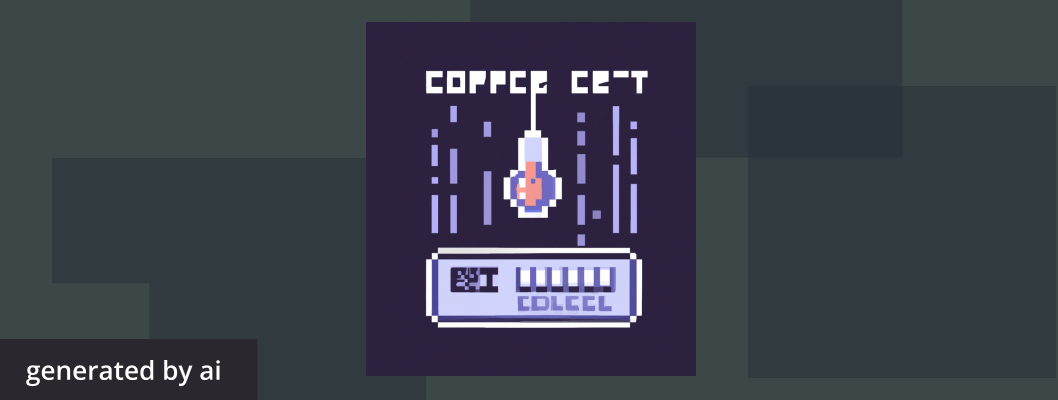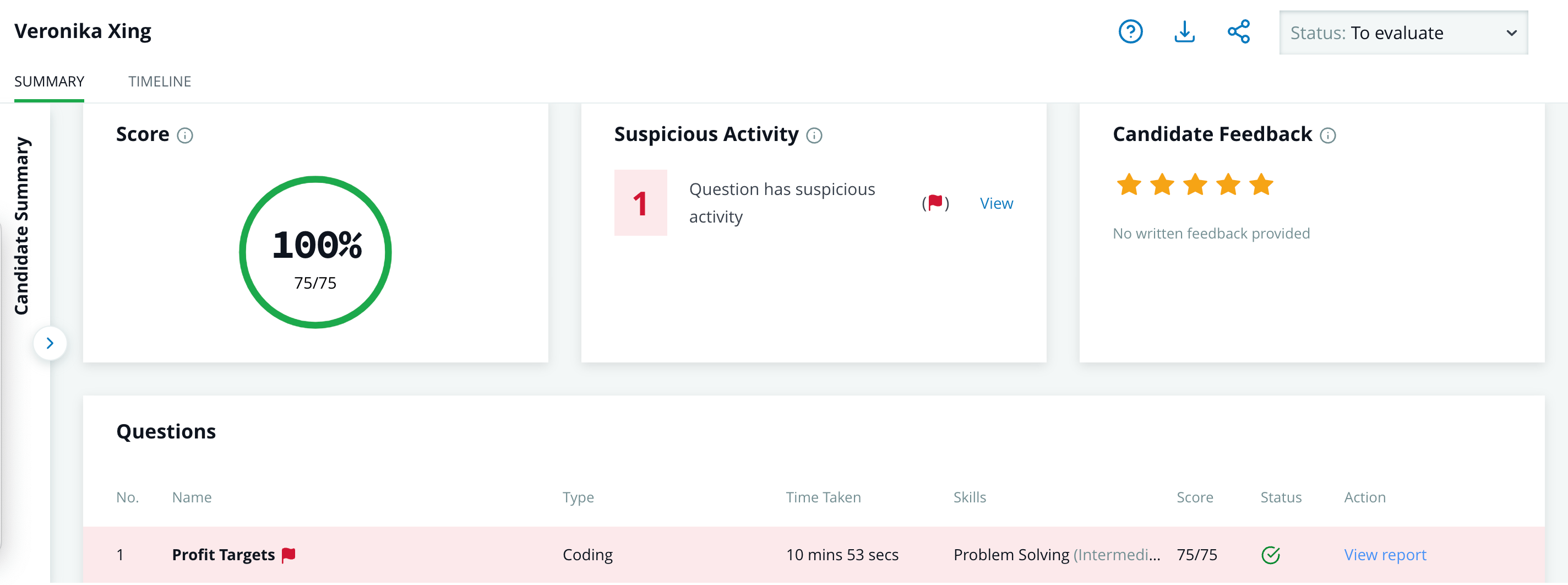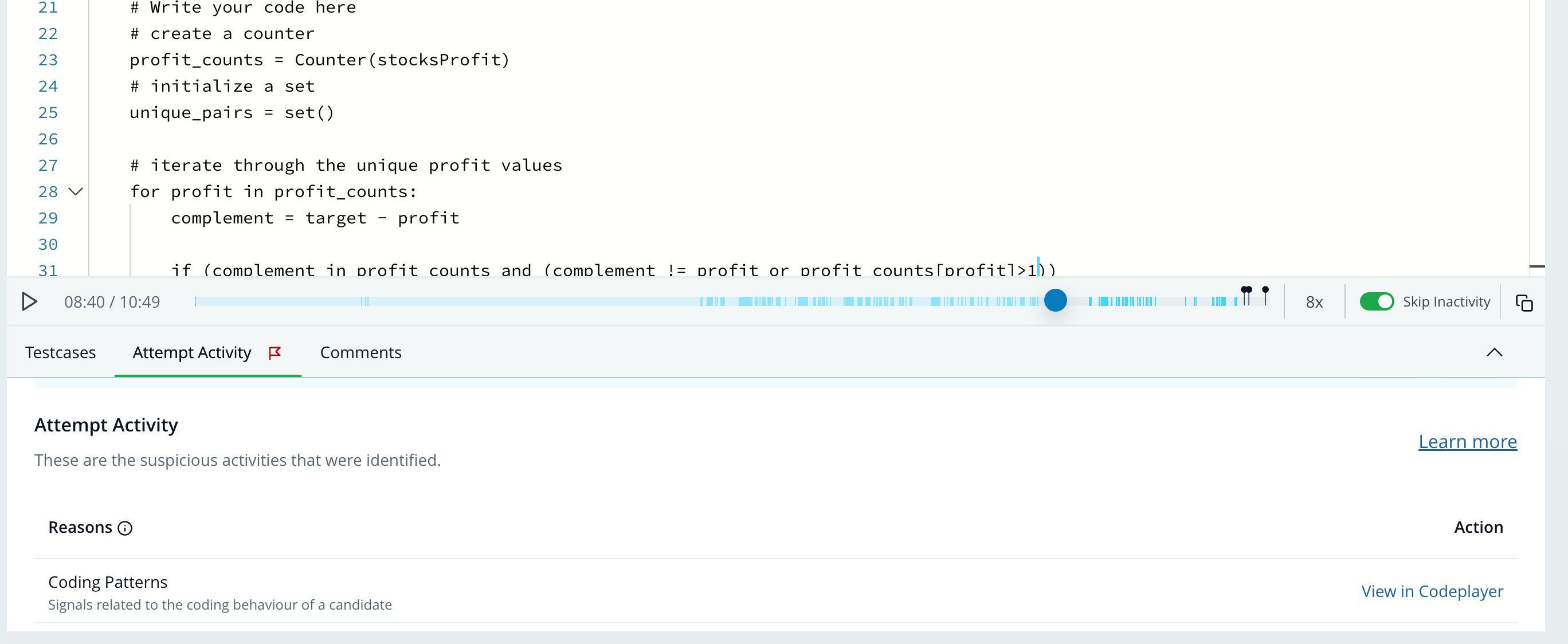 What you need to know
What you need to know
HackerRank has just launched its advanced plagiarism detection system, powered by AI. Designed to protect assessment integrity while ensuring developers have a fair and level playing field to showcase their skills, this system uses dozens of signals to detect suspicious behavior, including the use of external tools.
The revolution will be prompted
AI is here, and it’s not going anywhere. 82% of developers have already experimented with some type of AI tool, and 55% are using AI assistants at work. AI is redefining what it means to be a developer, and in the future most code will be written with some kind of AI support.
AI opens up all kinds of exciting possibilities, but it can also muddy the waters of technical assessments. GPT-4 can not only pass AP exams and simpler coding challenges; it can also bypass MOSS code similarity, which has long been the industry standard for coding plagiarism detection.
How can you ensure assessment integrity? If you’re relying on MOSS code similarity, you can’t. Not anymore. That means you can’t place full confidence in a candidate’s skills, and you can’t assure developers that they’re showcasing their skills on a level playing field.
Fighting magic with magic
Basing any kind of detection system around AI usage would be a futile endeavor. AI is advancing so rapidly that keeping said detection systems ahead of it would be nearly impossible.
Rather than relying on any single point of analysis like MOSS Code Similarity or AI usage, we took a different path and built an AI model that looks at dozens of signals, including aspects of the candidate’s coding behavior. This “defense in breadth” compensates for signals that may be bypassed on an individual basis and gives our new plagiarism detection system a more holistic way to detect shenanigans.
Think of it like a security system. A system that relies on a single factor, like a fingerprint scanner, is secure until that single factor can be bypassed. A multi-factor system that employs x-ray scanners, metal detectors, facial recognition, and gait analysis is far more challenging to sneak past.
Plagiarism detection, powered by AI
Our plagiarism detection system tracks dozens of signals across three categories—coding behavior features, attempt submission features, and question features—and analyzes them to calculate the likelihood of suspicious activity.
After all of that crunching, our model predicts plagiarism suspicion as either High, Medium, or No.
Importantly, we do not use any personal data such as gender, race, age, school, location, or experience in our analysis model.
Currently, our advanced plagiarism detection system achieves an incredible 93% accuracy rate. In real-world conditions, our system repeatedly detects ChatGPT-generated solutions, even when those results are typed in manually, and even when they easily pass MOSS Code Similarity.
What happens when a ChatGPT-generated answer gets submitted through our new system? It gets flagged for suspicious activity.

Clicking into that suspicious activity reveals that our model identified the plagiarism due to coding behaviors.

What’s more, hiring managers can replay the answer keystroke by keystroke to confirm the suspicious activity.

There’s nothing even close to it on the market, and what’s more, it’s a learning model, which means it will only get more accurate over time.
Ensure assessment integrity and candidate confidence
Our new AI-powered plagiarism detection is a groundbreaking innovation. It protects assessment integrity and ensures a fair playing field for developers to showcase their skills, and there’s nothing else out there that comes close.
As the AI revolution reshapes the industry, it’s vital to have reliable and efficient methods to detect and prevent plagiarism in online assessments. By analyzing various aspects of coding behavior and offering 93% detection accuracy, this system sets a new standard for maintaining transparency, fairness, and equity.
Want to go deeper and see our new plagiarism detection in action? We’d be happy to show you around.
